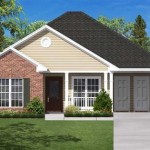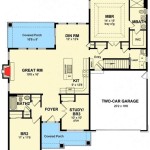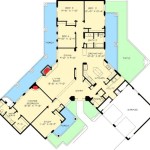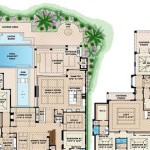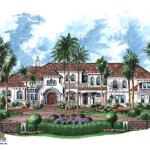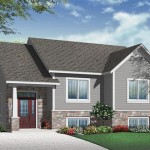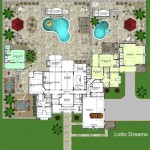3-Story 5-Bedroom House Plans: Maximizing Space and Design
Three-story, five-bedroom house plans represent a significant investment in space, functionality, and vertical living. These plans are often chosen by growing families, multi-generational households, or individuals who desire ample room for guests, hobbies, and home offices. The inherent design challenges and opportunities presented by a three-story structure require careful consideration during the planning phase, ensuring a harmonious blend of aesthetics and practicality. This article will explore key aspects of designing and selecting 3-story, 5-bedroom house plans, examining various layouts, architectural styles, and essential considerations for successful implementation.
Optimizing Layout and Functionality in a Vertical Space
Designing a three-story home necessitates a strategic approach to layout. The vertical nature of the structure requires careful placement of essential rooms and consideration of accessibility. A common strategy involves designating the ground floor for communal living spaces, the second floor for bedrooms, and the third floor for additional bedrooms, recreational areas, or specialized spaces like home offices and media rooms. However, variations are plentiful and dependent on individual needs and preferences.
The placement of the master suite is a critical decision. Some homeowners prefer the master suite on the second floor, close to other bedrooms, facilitating parental oversight of younger children. Others opt for a third-floor master suite, creating a private retreat away from the main living areas. Each option presents unique advantages and disadvantages, which must be carefully weighed based on the occupants' lifestyle and priorities.
Circulation is another paramount concern. Staircases are an unavoidable element of three-story homes, and their design and placement significantly impact the overall flow of the house. Well-placed staircases can enhance the architectural appeal of the home, while poorly designed staircases can create bottlenecks and detract from the living experience. Consider the width of the stairs, the rise and run of the steps, and the inclusion of landings for resting. Furthermore, accessibility should be a factor, with potential future needs for mobility aids like stairlifts taken into account.
Elevators are an increasingly popular option in multi-story homes, particularly for aging individuals or those with mobility challenges. Integrating an elevator into the design requires careful planning and structural reinforcement. While adding to the overall cost of the project, an elevator can significantly enhance the long-term usability and value of the home.
Natural light is crucial in any home design; however, with three-story structures, careful planning is needed to ensure sufficient light reaches all levels. Large windows, strategically placed skylights, and light wells can help maximize natural illumination. The orientation of the house relative to the sun's path is also a significant factor, influencing the amount of sunlight received throughout the day. Consider incorporating light-reflecting materials and open floor plans to further enhance the distribution of natural light throughout the home.
Exploring Architectural Styles and Design Considerations
Three-story house plans can accommodate a wide range of architectural styles, from traditional to contemporary. The choice of style will significantly influence the exterior appearance of the home, as well as the interior layout and design elements. Traditional styles, such as Victorian or Colonial, often feature ornate details, pitched roofs, and formal living spaces. Contemporary styles, on the other hand, typically emphasize clean lines, minimalist aesthetics, and open floor plans.
Building codes and zoning regulations often impose restrictions on building height and setback requirements. Before committing to a specific house plan, it is imperative to verify compliance with all applicable regulations. These regulations may dictate the maximum height of the structure, the minimum distance from property lines, and other design parameters. Failure to comply with these regulations can result in costly delays and modifications to the building plan.
The structural integrity of a three-story home is paramount. The foundation must be robust enough to support the weight of the structure, and the framing must be designed to withstand wind loads and seismic activity. Consult with a qualified structural engineer to ensure that the house plan meets all applicable building codes and safety standards. Proper insulation and ventilation are also crucial for maintaining a comfortable and energy-efficient living environment. Consider incorporating energy-efficient windows, insulation, and HVAC systems to minimize energy consumption and reduce utility bills.
Exterior materials play a significant role in the overall aesthetic appeal and durability of the home. Common exterior materials include brick, siding, stucco, and stone. The choice of materials will depend on the architectural style, budget, and climate. Consider the long-term maintenance requirements of each material and select options that are resistant to weathering and pests. The roof design is also an essential element of the exterior, influencing both the appearance and functionality of the home. Common roof styles include gable, hip, and flat roofs. The choice of roofing material will depend on the architectural style, budget, and climate. Consider durable and weather-resistant materials such as asphalt shingles, tile, or metal.
Landscaping is an integral part of the overall design, enhancing the curb appeal and creating a welcoming environment. Consider incorporating trees, shrubs, and flowers that complement the architectural style of the home. Plan for outdoor living spaces, such as patios, decks, or porches, to extend the living area and provide opportunities for relaxation and entertainment. Proper drainage is also essential to prevent water damage to the foundation and landscaping.
Addressing Cost Considerations and Maximizing Value
Building a three-story, five-bedroom home represents a substantial financial investment. It is imperative to develop a realistic budget and carefully track expenses throughout the construction process. The cost of construction will vary depending on several factors, including the size of the home, the quality of materials, the complexity of the design, and the location of the project. Obtain multiple bids from qualified contractors to ensure competitive pricing and compare the scope of work and materials specifications before making a decision.
Value engineering can help optimize the project's cost-effectiveness without compromising quality. This involves identifying areas where costs can be reduced without sacrificing essential features or structural integrity. Examples of value engineering strategies include simplifying the design, using alternative materials, and optimizing the layout to minimize wasted space. Prioritize features that are essential to your lifestyle and consider deferring non-essential upgrades to a later date.
Financing options for new home construction include construction loans, mortgage loans, and personal savings. Construction loans typically provide funds for the duration of the construction project, while mortgage loans are used to finance the completed home. Shop around for the best interest rates and terms before committing to a specific financing option. Consider the long-term financial implications of your decision and choose a financing plan that aligns with your budget and financial goals.
The resale value of a three-story, five-bedroom home is influenced by several factors, including the location, the quality of construction, the architectural style, and the features and amenities. Homes in desirable neighborhoods with good schools and convenient access to amenities tend to command higher resale values. Maintaining the home in good condition and making strategic upgrades can help enhance its value over time. Consider energy-efficient upgrades, such as solar panels or improved insulation, which can both reduce operating costs and increase the home's appeal to potential buyers.
Professional guidance is invaluable throughout the design and construction process. Hiring an experienced architect, contractor, and interior designer can help ensure that the project is completed on time, within budget, and to your satisfaction. Architects can help develop a house plan that meets your needs and preferences, while contractors can manage the construction process and ensure that the work is performed to code. Interior designers can help select materials, finishes, and furnishings that create a cohesive and stylish living environment. Engage professionals who have a proven track record of success and who communicate effectively and transparently.

Plan 23794jd Beautiful 3 Story Craftsman House With 5 Or 6 Bedrooms

Barn Plan 3 403 Square Feet 5 Bedrooms Bathrooms 940 00442

490 5 Bedroom House Plans Ideas

5 Bedrooms Archives House Plans 3d

3 Story 5 Bedroom House Plan

Craftsman Plan 3 580 Square Feet 5 Bedrooms Bathrooms 8318 00278

3 Story 5 Bedroom House Plan

Mediterranean Style House Plan 5 Beds 3 Baths 4457 Sq Ft 320 1469

5 Bedroom House Plans Monster

3 Story 5 Bedroom House Plan

